
Common Snake Species in Springfield
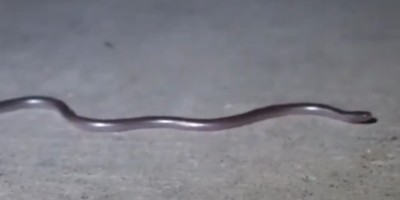 Flat-headed Snake:
Appearance: The flat-headed snake is a small species whose body length averages 7-8 inches. Body color varies from red-brown, gray-brown, or tan, with the head being more colored. Moreover, they have a salmon-pink belly.
Habitat: Flat-headed snakes love wooded, rocky, south-facing, and moist hillsides. Also, it's likely to be found hiding under rocks in areas with damp soils. Their food consists of insects and their larvae.
Behavior: This creature burrows under moist soils or hides beneath rocks. For that reason, frequently encountering them is not easy. Besides, they hibernate during the hot season and in winter and resurface when temperatures are favorable.
Flat-headed Snake:
Appearance: The flat-headed snake is a small species whose body length averages 7-8 inches. Body color varies from red-brown, gray-brown, or tan, with the head being more colored. Moreover, they have a salmon-pink belly.
Habitat: Flat-headed snakes love wooded, rocky, south-facing, and moist hillsides. Also, it's likely to be found hiding under rocks in areas with damp soils. Their food consists of insects and their larvae.
Behavior: This creature burrows under moist soils or hides beneath rocks. For that reason, frequently encountering them is not easy. Besides, they hibernate during the hot season and in winter and resurface when temperatures are favorable.
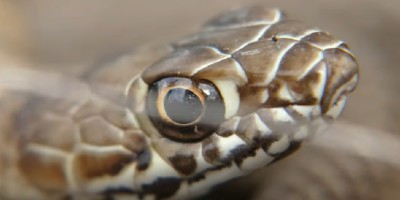 Western Earth Snake:
Appearance: The western earth snake is a relatively short species, 7-10 inches. It has a cone-shaped head with the upper body color resembling ground—gray to reddish-brown, while the belly is purely white or cream. In addition to that, they have keeled smooth scales.
Habitat: This snake species loves old fields and woodlands. In such areas, it buries itself under leaf litter, logs, or beneath rocks. Their primary food source is earthworms and grubs.
Behavior: Western earth snakes are rarely seen on the ground as they spend most of their time burrowed under rocks and soil.
Western Earth Snake:
Appearance: The western earth snake is a relatively short species, 7-10 inches. It has a cone-shaped head with the upper body color resembling ground—gray to reddish-brown, while the belly is purely white or cream. In addition to that, they have keeled smooth scales.
Habitat: This snake species loves old fields and woodlands. In such areas, it buries itself under leaf litter, logs, or beneath rocks. Their primary food source is earthworms and grubs.
Behavior: Western earth snakes are rarely seen on the ground as they spend most of their time burrowed under rocks and soil.
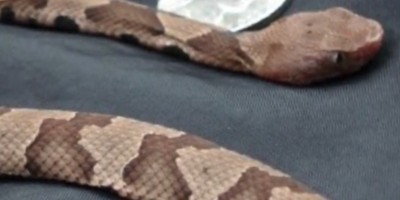 Midland Brown Snake:
Appearance: The midland brown snake derives its name from its brown body color. It has a red-brown to gray-brown body while the belly is yellowish or white. A tan band embedded between a double-row of dark dots is also notable at the back. This snake is medium-build with lengths ranging from 9-13 inches.
Habitat: This brown reptile is found under rocks, logs, and boards, provided they are moist. Moreover, they can reside on rocky hills or areas near swamps and marshes. It feeds on slugs, soft-bodied insects, earthworms, and snails.
Behavior: Though harmless, a carelessly handled midland brown snake responds by lowering the head and neck before secreting a foul odor from the glands beneath the tail as a repellent.
Midland Brown Snake:
Appearance: The midland brown snake derives its name from its brown body color. It has a red-brown to gray-brown body while the belly is yellowish or white. A tan band embedded between a double-row of dark dots is also notable at the back. This snake is medium-build with lengths ranging from 9-13 inches.
Habitat: This brown reptile is found under rocks, logs, and boards, provided they are moist. Moreover, they can reside on rocky hills or areas near swamps and marshes. It feeds on slugs, soft-bodied insects, earthworms, and snails.
Behavior: Though harmless, a carelessly handled midland brown snake responds by lowering the head and neck before secreting a foul odor from the glands beneath the tail as a repellent.
Venomous Snake Species in Springfield
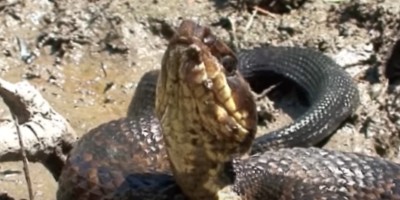 Western Cottonmouth:
Appearance: The western cottonmouth is also called the water moccasin. This snake has a white band in the mouth, granting it the name “cottonmouth”. Its color is either pure black or maybe dark-brown with dull cross stripes at the back. Body length is 30-42 inches.
Habitat: The water moccasin lives in rocky streams, swamps, and river sloughs. When it comes to feeding, their diet consists of frogs, fish, small snakes, and rodents.
Behavior: When frightened, the water moccasin lifts its head while opening the mouth, ready to attack. This snake is a venomous species. Therefore, you should be careful when you come across it.
Western Cottonmouth:
Appearance: The western cottonmouth is also called the water moccasin. This snake has a white band in the mouth, granting it the name “cottonmouth”. Its color is either pure black or maybe dark-brown with dull cross stripes at the back. Body length is 30-42 inches.
Habitat: The water moccasin lives in rocky streams, swamps, and river sloughs. When it comes to feeding, their diet consists of frogs, fish, small snakes, and rodents.
Behavior: When frightened, the water moccasin lifts its head while opening the mouth, ready to attack. This snake is a venomous species. Therefore, you should be careful when you come across it.
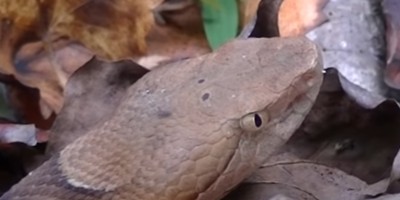 Southern Copperhead:
Appearance: The southern copperhead resembles other copperheads like the northern species. Its body color is coppery, tan, or gray. Also, it has an hourglass-shaped band along the body. A full-grown southern copperhead can grow up to 2-4 feet long.
Habitat: This reptile is found in forests, prairie streams, deserted farm buildings, and rocky hills. It feeds on frogs, small snakes, lizards, mice, and little birds.
Behavior: It's sensitive to temperatures. Therefore, it's inactive during the day in hot months and very active at night. Since they're cold-blooded animals, they bask in the sun to warm their bodies during cold months. Also, they become social during this period. Copperheads remain stuck when handled, but you should be careful since they are venomous.
Southern Copperhead:
Appearance: The southern copperhead resembles other copperheads like the northern species. Its body color is coppery, tan, or gray. Also, it has an hourglass-shaped band along the body. A full-grown southern copperhead can grow up to 2-4 feet long.
Habitat: This reptile is found in forests, prairie streams, deserted farm buildings, and rocky hills. It feeds on frogs, small snakes, lizards, mice, and little birds.
Behavior: It's sensitive to temperatures. Therefore, it's inactive during the day in hot months and very active at night. Since they're cold-blooded animals, they bask in the sun to warm their bodies during cold months. Also, they become social during this period. Copperheads remain stuck when handled, but you should be careful since they are venomous.